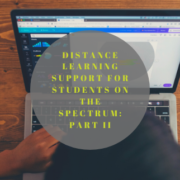How-To Stay in the Know: News for Middle Schoolers

With the prevalence of smartphones, middle schoolers have almost constant connectivity and sources of information. Today’s middle schoolers may not be 100 percent enthralled with current events; however, with the current state of affairs for national and global news, it is important that preteens are receiving accurate, appropriate information. As much as we want all kids to be properly informed, they must be careful with what they are watching and the information that they are receiving. Much like the qualms with social media, middle schoolers are equally vulnerable when it comes to today’s current events. Below are important pointers and suggestions for staying up on current events with middle school-aged students.
Be cognizant of the inevitable biases present in news media. Middles school is right around the time that students begin to learn about performing sound research, obtaining evidence, and citing sources. Whether reading articles, watching national or local news outlets, or simply receiving social media updates and tweets, adolescents need to be aware of the fact that nearly every news story contains some thread of subjectivity or bias. Of course, people in the business of reporting the news go to great lengths to simply report—with total impartiality. However, the human component of news just inevitably does not allow for stories to remain 100 percent neutral at all times. For this reason, students should know how to identify bias in anything they watch or read involving news. Questions to ask include: What is the purpose of relaying this particular story, i.e., who will benefit from knowing or learning about this? Who might this news story be targeting? Is there a recognizable tone in the story or clip?
Know the difference between credibility and unreliability. Again, this is likely a newer concept for middle schoolers. When it comes to news stories, news media is so prevalent these days that accurate stories can easily be spun or altered and quickly posted to a pseudo-reliable news source. Fact-checking is something that middle school students can do in order to double check a source that may seem unreliable. Today’s school libraries and media centers have wonderful resources that help with providing credible sources. Whether primary or secondary sources, schools purchase multiple paid forums, anthologies, and online databases for students to conduct research or investigate specific topics.
Middle schoolers should utilize age-appropriate outlets to ensure that the news is something that they can understand and appreciate. Many issues or headlines are not only disturbing or violent, but confusing as well. Discovery Channel, Channel One, Scholastic, Time Magazine, and CNN all provide student-friendly episodes, articles, and other resources so that current events are academically accessible and appropriate for middle schoolers.




